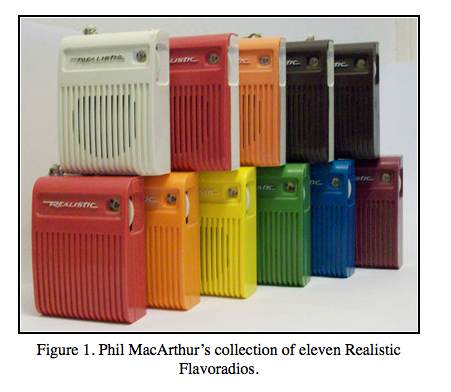 Radio Shack, Reuters reports, has had an excellent quarter, in a time when other retailers have not. Wow. But let’s digress into nostalgia. It’s much more fun.
Radio Shack, Reuters reports, has had an excellent quarter, in a time when other retailers have not. Wow. But let’s digress into nostalgia. It’s much more fun.
As a child and as a devotee of brands, I shared a love (and frustration) with the Radio Shack (NYSE: RSH) of the 1960s, 70s and 80s. (Great history is at www.antiqueradio.com) On the plus side, it had everything I ever wanted. I would count days until the arrival of their yearly catalog, and pour over their various antennae, phones, connectors, kits, toys and electronics. From Radio Shack, I weaned my parents from their old lease relationship with a Bell System telephone; Radio Shack sold Canadian telephones from Northern Telecom, I think. Their Archer antennae, Realistic speakers and audio components and Optimus speakers spoke to me, in the geekiest sort of way. In each product category, Radio Shack had a branded product of its own, often an exact copy of another product on the market. If it sold branded electronics, it would be merely a dealer. They did stuff that was cool.
The company also had a messianic spirit about it; I particularly appreciated their electronics kits, which were actually a number of different diodes, switches, light bulbs, solar panels, buzzers and such on a flat board, each part connecting to two springs. The kit came with all sorts of diagrams. By changing the wires, a kid could learn how to build basic circuits and electronic components. Wire it one way, and you have a buzzer system; another, and you have a radio. It taught me the basics of electronics; who knows how many boys were persuaded to go into electrical engineering careers because of it. As I look back on it, I can appreciate how the company was committed to learning; ultimately it made me respect Radio Shack as a competent and only sometimes glamorous supplier of all things electronic.
Rural folks had Archer antannae
One part of the Radio Shack experience bugged me, at least then. It was their use of store brands. You might remember the brands; which were not only specific products but specific types of products. Archer went on antennae tuners; throughout the rural south the name sat on top of TVs. Realistic on audio components. Optimus on speakers. Then there were the individual products like the Weatheradio, which was a cool little fake wood-grained box with an antenna sticking out the top. It only received National Weather Service forecasts, which could be had by pressing the little white bar on the top with a click. Every boat person had one on their boat or in their piney paneled dens; in a simple way it asked the question we all ask; what’s the weather today and tomorrow? The most genius product? It would have to be the Radio Shack Flavoradio, which was a simple transistor radio that came in tasty colors; we think it was the inspiration for the iMac. (See Phil MacArthur’s excellent article in www.antiqueradio.com.)
I digress into this because I strongly believed then that it was silly for Radio Shack to have its own brands when I could see that they were just exact duplicates of other items I saw in other stores. In my 70s pre-teen mind, I found the com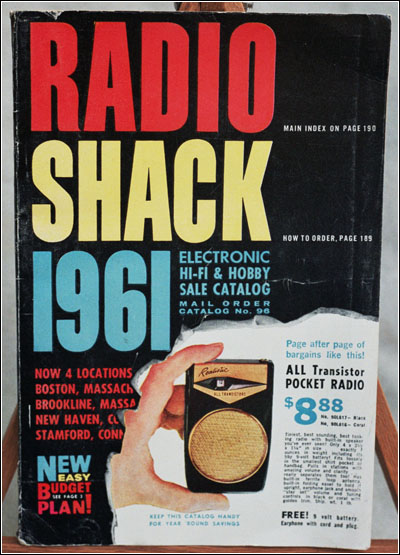 pany sort of corny and old fashioned, and wondered why the cool brands that I craved – then Koss, Pioneer, Hallicrafters, AIWA and Sansui (particularly AIWA reel to reels) – were not sold at Radio Shack. How cool Radio Shack would have been if it had just stocked all of that! Like Kmart (then ONLY store brands), Murphy’ s Mart and Howard Johnson (why, HoJo cola?) which only sold its own brands back in the 70s, it was limiting itself.
pany sort of corny and old fashioned, and wondered why the cool brands that I craved – then Koss, Pioneer, Hallicrafters, AIWA and Sansui (particularly AIWA reel to reels) – were not sold at Radio Shack. How cool Radio Shack would have been if it had just stocked all of that! Like Kmart (then ONLY store brands), Murphy’ s Mart and Howard Johnson (why, HoJo cola?) which only sold its own brands back in the 70s, it was limiting itself.
And Radio Shack’s consistent pricing, catalogs and well stocked stores ensured that almost always I turned to Radio Shack, as did the rest of the nation.
Time Heals Bad Brands
This could have been good brand strategy by Radio Shack. It could have also been time and a stick-to-it-ive luck that made it work. For there is a rule with brands; it is the “Time Heals All Bad Brands.” It means this—if a company delivers a good product over and over again with a brand name that doesn’t work properly or is not well executed with graphics and such—it can still work as a brand and gain traction in spite of the poor execution of the graphics, packaging, advertising and marketing.
Sadly, Radio Shack tampered with a goofy formula.
Today, at Radio Shack, the brands are all diminished. The store and website is now are cluttered with Onkyo, RCA and Sony. Not a big loss for civilization, I suppose. But I don’t think Radio Shack gained anything by diminishing the Realistic brand in favor of Radio Shack.
They negated 30 years of their own, odd brand premise by diminishing the old names and now the weird practice that I have finally gotten used to has now disappeared. And they appear just like anybody else. In fact, because the stores were so small, they just look like diminished superstores, not audio boutiques.
That being said, their stock (NYSE: RSH) was at $19 at presstime, off from $35 in 2004 and $72 in 1999. That’s not too good, but compared to some others, it means that the company has life. And with clever management, it has room to grow again, with its advantages in location convenience (small stores in strip centers) and technology changes in television, radio and electronics that require store traffic. Profits are up, in a horrid time.
That’s really good news. Realistic good news.
Read our other posts on Radio Shack:

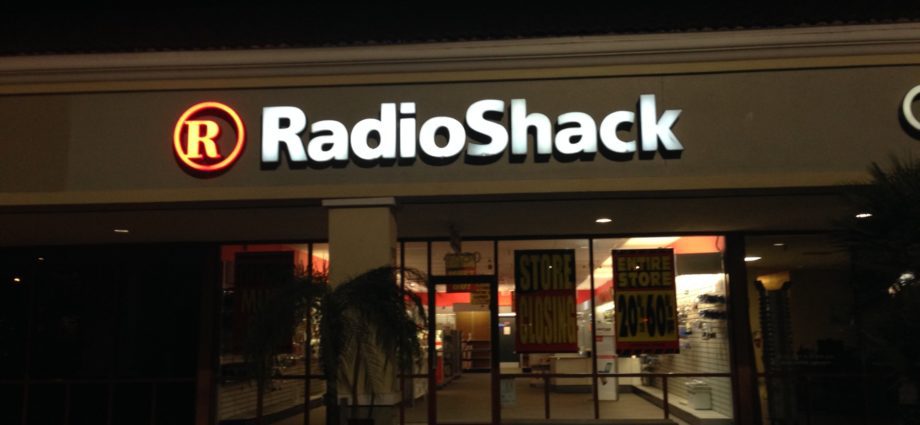

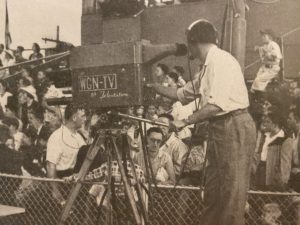
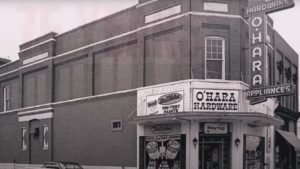

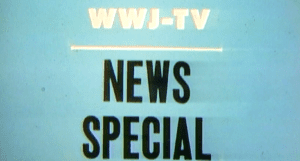

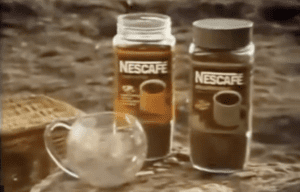
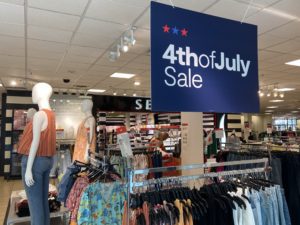
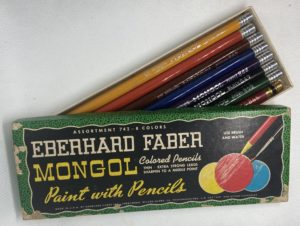


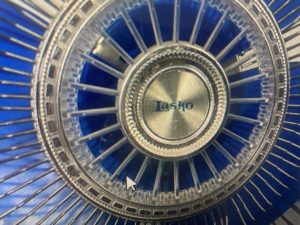

I miss these little radios so much. This old tech is a treasure!
I miss the Radio Shack I knew in the 80’s. When stuff worked. And worked well. The battery club was great for a kid with electronic toys. The radio controlled cars were amazing. Somthing changed in the 90’s. Somehow, every single thing I bought with one of their house brands failed to work. Every. Single. Thing. Need a part or battery? Great! Go to “the Shack.” Need a radio, CD player, or other complete product? Best Buy would have a name brand that would work for more than a week.
From the date codes on the Flavoradios I have, it appears that the Realistic name was changing to Radio Shack around 1993, then finally to the Optimus name around 1999. Their catalogs show an interesting mix of these three names throughout the 1990’s. I still hit the local ‘Shack’ whenever I need a part right now, so I’m glad they’re around still.
The Flavoradio (model 12-166), an am only pocket radio made in Korea for Radio Shack, was the longest running production radio ever built, 15 years (1972 – 1986). It made the cover of the March 2008 Antique Radio Classified.
There was a time not so long ago when I spent over $1200.oo in a year at Radio Shack and most components were under $2.00
I do not go there at all now.